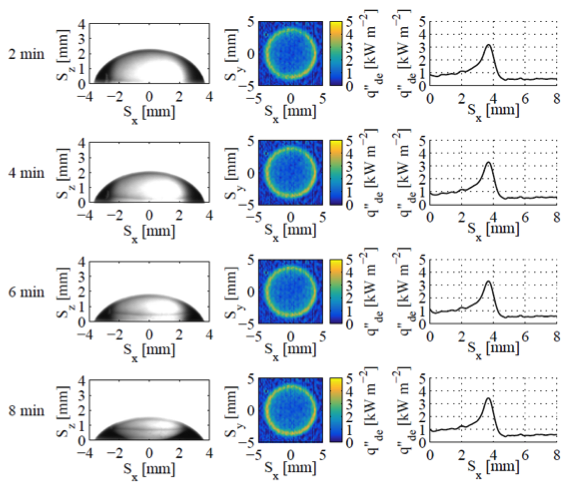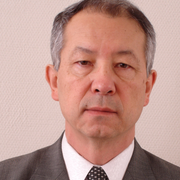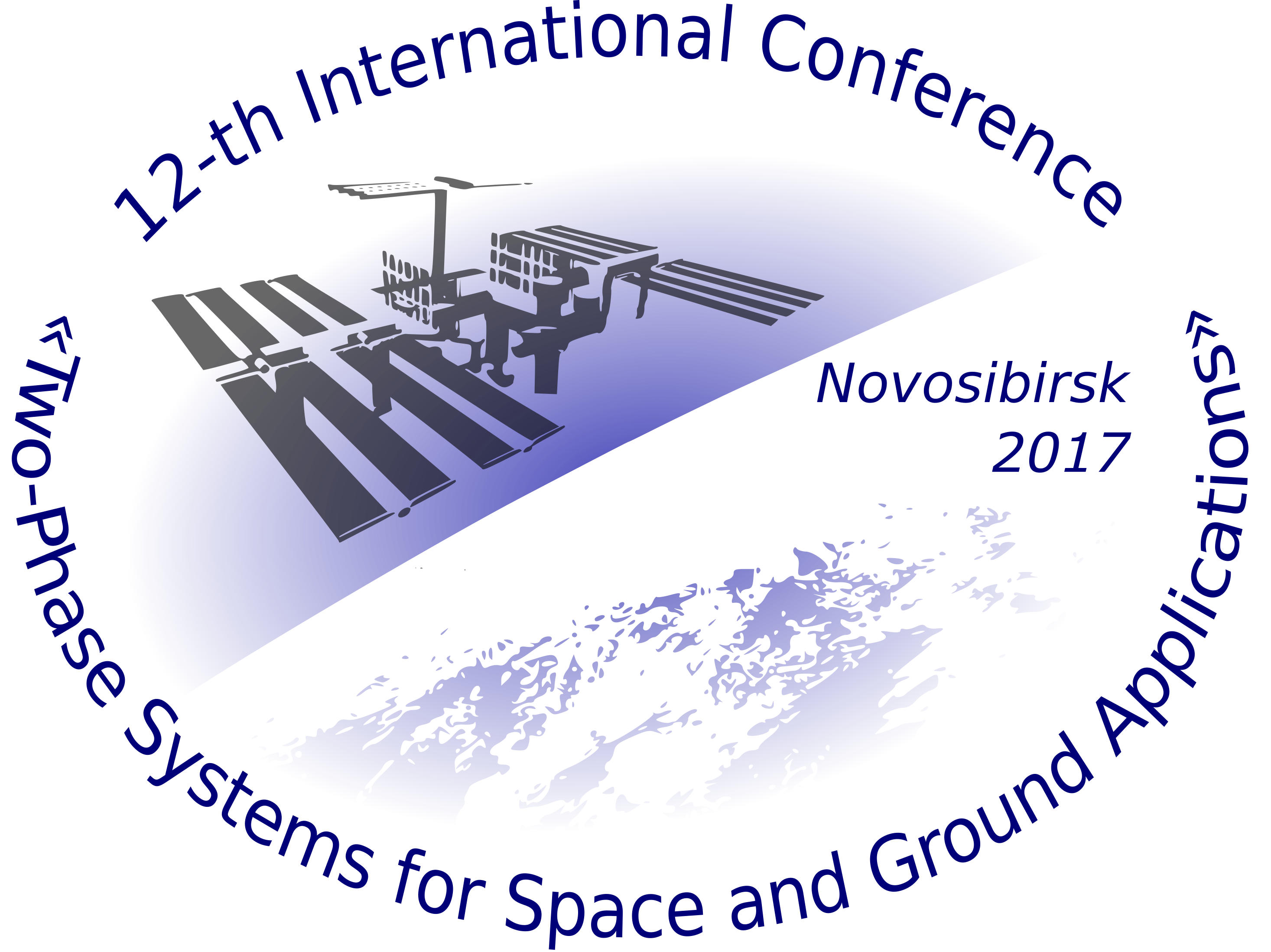Keynote Speakers

Contact Line Dynamics and Evaporation of a Sessile Droplet on Chemically Patterned Surfaces
Prof. Huihe Qiu
Department of Mechanical and Aerospace Engineering
The Hong Kong University of Science & Technology
Clear Water Bay, Kowloon, Hong Kong
meqiu@ust.hk
Professor Huihe Qiu is currently Professor and Associate Head in the Department of Mechanical and Aerospace Engineering at The Hong Kong University of Science & Technology. Professor Qiu received his Ph.D. degree from Institute of Fluid Mechanics, LSTM, at the University of Erlangen, Germany in 1994. Professor Qiu’s research areas are in, multiphase flow and heat transfer, fluid dynamics, optical diagnostics, nano- and microfluids and flapping wing aerodynamics. Professor Qiu is Editor-in-Chief/Editor/Associate Editor of four international journals and a member of the editorial board for more than 10 international journals, such as the members of Editorial Advisory Board of Experiments in Fluids. He has been invited to give 21 plenary and keynote speeches in International Conferences. He is the recipient of the Best Paper Award of Institute of Physics (IOP) in 1994, Philips Outstanding Paper Award in the International Conference on Electronic Packaging Technology and High Density Packaging (2012), ASME Best Poster Award (2010), Best Paper Award, 2nd World Congress on Mechanical, Chemical, Material Engineering (2016), Best Paper Award, 4th International Conference on Heat Transfer and Fluid Flow (2017), The State Scientific and Technological Progress Award (SSTPA) and the Scientific and Technological Achievement Award from the State Education Commission.
Abstract
Recently, chemically patterned surfaces has attracted a lot of attention owing to their special features in controlling contact line dynamics and evaporation of sessile droplets. Though significant progress has been made in studying contact line dynamics and evaporation of a sessile droplet on homogeneous surfaces, many unanswered questions remain for chemically patterned surfaces. Furthermore, the evaporation of a multicomponent droplet on a chemically patterned surface is more complex due to local Marangoni force variations. In fact, the pinning and depinning of a sessile droplet on chemically patterned surfaces are determined by the interplay of the interfacial free energies of the droplet and the wettability pattern of the surfaces. The interplay can give rise to morphological transitions upon changing the volume/concentration of the droplet or the wettability contrast and thus the contact angle on the substrate.
In this talk, the questions of the effects of chemically patterned surfaces on the evaporation of single/multi-component sessile droplets are addressed. We first report the evaporation dynamics of droplets on hydrophobic-network surfaces and found out that the processes can be divided into different stages: constant contact line (CCL), constant contact angle (CCA), pattern-pinning (PP) and moving contact line (MCL) stages. We developed analytical models for accurately predicting the transition of evaporation stage (critical receding contact angle). It is shown that when the contact line is pinned on a hydrophobic−hydrophilic boundary, different contact angles can be interpreted as the variation of the length of the contact line occupied by each component. Furthermore, each evaporation stage can be successfully predicted by using this newly developed models. The effective contact line length that affects the evaporation rate is analyzed taking the influence of chemically patterned surfaces into consideration. The contact line dynamics, fluid flow and species dynamics of an evaporating multicomponent droplet on chemically patterned surfaces are reported utilizing a novel AIEgen-based direct visualization, high speed visualization, micro resolution PIV and ray tracing techniques. Utilizing the experimental and analytical results, the mechanisms behind contact line pinning/depinning and the critical receding contact angles under different species concentrations on chemically patterned surfaces are discussed in details on the microscale.

Experimental determination of local heat flux during droplet evaporation in microgravity
Prof. Paolo Di Marco
DESTEC, University of Pisa
Largo Lazzarino 1, 56122 Pisa, Italy
p.dimarco@ing.unipi.it
Paolo Di Marco is currently Associate Professor in Engineering Thermodynamics and Heat Transfer at the School of Engineering, University of Pisa, Italy. He graduated in Nuclear Engineering in 1984 and obtained a Ph.D. in Nuclear Engineering Safety in 1989. During his scientific career, from 1995, he dedicated mostly on experimental investigations. His fields of interest include: Single-Phase and Boiling Heat Transfer, Bubble Dynamics, Heat Transfer in Microgravity,Effect of Electric Fields on Heat Transfer. He performed a wide experimentation on boiling in microgravity, in particular in the presence of electric fields, with several campaigns in parabolic flight, droptowers, sounding rockets and one satellite flight. He is member of the ESA Topical Team in Boiling and Evaporation, and of the International Topical Team on Fluids in Space. At present he is contributing to definition of several experiments to be flown inside the International Space Station. He is author or co-author of more than 100 refereed papers in the specialized fields above. He is at present president of EUROTHERM (European Committee for the Advancement of Thermal Sciences and Heat Transfer) and member of the Executive Committee of ICHMT (International Centre for Heat and Mass Transfer). He is associate editor of Journal of Multiphase Flow.
Abstract
Recent works highlighted the dependency of droplet evaporation process on the working fluid, surrounding gas, and heated substrate properties (Brutin, 2015). The highest local heat transfer for an evaporating droplet occurs at the contact line (Marchuk et al., 2015). The contact line or triple line is defined as the region where the gas, liquid and solid phases intersect. It can be broken-up into four distinct regions: Micro-convection region, Intrinsic Meniscus region, Transition region, and Absorbed film region (Stephan and Hammer, 1994, Raghupathi and Kandlikar, 2016). This lecture is devoted to experimental determination of local heat flux during droplet evaporation. Experiments were carried out both on ground under terrestrial conditions and under micro-gravity conditions in the 66th esa parabolic flight campaign, held in May 2017. Figure 1 shows the droplet shapes, heat flux distributions and local convective heat flux distribution over the evaporation pinned regime in terrestrial gravity conditions. From left to right column, it can be seen the droplet boundary profile, the local convective heat flux distribution and the radial convective heat flux profile. It clearly shows that the droplet follows Constant Contact Radius mode evaporation process. The radial heat flux profile highlights that the peak convective heat transfer is located at the triple line at all times. Despite an obvious droplet morphology change, the local heat flux profile remains basically the same due to pinned contact line. One can therefore conclude that a clear change in the apparent droplet contact angle yields no change in the thin film transition region due to the near constant heat flux distribution.
Figure 2 shows the heat flux distribution of an evaporating droplet and the droplet shape obtained respectively from the IR and optical cameras. Those images are preliminary results from the 66th ESA parabolic flight campaign. In the latter, experiments were carried out with and without electric field under both terrestrial and micro-gravity conditions. When a sessile droplet evaporates while an electric field is applied, its shape results from the balance of surface tension, electrostatic and gravitational forces. Its evaporation rate as well as its shape is also intrinsically linked to the contact line motion. This investigation focuses on the impact of force fields (namely, a static electric field and the gravitational one) on triple line dynamics and heat transfer. Their respective contributions to the local convective heat flux in the contact line region and across the entire evaporating droplet will be presented.
The extended abstract is available here.

Figure 1: Wetting droplet evaporation, shape, heat flux distribution and radial heat flux profile over time in terrestrial gravity conditions.

Figure 2: optical droplet images (left) and heat flux distribution (right) obtained in the 66th ESA parabolic flight campaign under terrestrial conditions.

Development of Mechanically Pumped Two-Phase Loop for Space Applications
Prof. Zhenhui He
Director of Center for Space Technology
Member of the Chinese Society of Space Research
Sun Yat-Sen University, School of Physics and Engineering (SPE)
Guangzhou, China
zhenhui.he@gmail.com
Zhen-Hui He got his B.Sc degree in Physics from Sun Yat-Sen University (SYSU) in 1985. He received his Ph. D. degree Low Temperature Physics from the University of Science and Technology of China in 1990. He is now a professor at state key laboratory of optoelectronics materials and technology, also school of physics and astronomy, Sun Yat-Sen university. His current research interest includes the dynamics and stability of two-phase flow systems, especially their space application. When the SYSU team joined the AMS-II program in 2004, and in cooperation with MIT, NLR, and INFN, he was responsible of developing a tracker thermal control system that has been working on the ISS since May 19, 2011. He has been involved in several space experiments, including evaporation and condensation experiment on TZ1. He is now the director of Center for Space Technology of SYSU; a member of the Chinese Society of Space Research, microgravity branch.
Abstract
Pumped two-phase loops, such as LHPs and CPLs, have been used in space for many years. Because of the coupling between the heat load and the flow rate, the applications are limited, especially for the instability in start-up. A mechanical pump can control the flow rate actively, and thus partially separates the coupling. A large potential of space application is foreseen. In this note, we introduce a few attempts in our group, to develop mechanically pumped two-phase loops for space applications
The first attempt of mechanically pumped two-phase loop, called TTCS, was developed to support the precision measurement of cosmic ray by AMS-02 on the ISS. It has been operating in space for almost six years. The heat load with distributed heat sources is constant, while the environmental temperatre varies in a wide range, sometimes, steeply. To keep the AMS-02 tracker in constant, and uniform distributed temperature, CO2 is used as working fluid. To dissipate heat of about 160W for the transportation distance of more than ten meters, a centrifugal pump is used to circulate the CO2. The transportation tubes were designed as small as possible to avoid secondary particle effect, requested by the AMS experiment. Some of the in-orbit performance will be presented.
The second attempt is to support the condensation experiment in the TianZhou cargo one(TZ1). To strength the circulating pump from the cavitation risk, a screw pump was developed, especially, for the two-phase loop. In this case, the heat load can vary from 0 to 90W, depending on the experiment; while the thermal environment is relatively stable, with the setup mounted inside the cargo chamber. R134a is used as the working fluid for this single two-phase loop. In-orbit performance would be observed from May to October, 2017. To support more two-phase flow experiments in microgravity in the Chinese Space Station, and based on the idea of reusable fluid driving unit, a model of providing low flow-rate liquid with control temperature is proposed and conceptually designed.

Evaporation Local Heat Transfer Coefficients of Refrigerant HFC-245fa in a Plate Heat Exchanger
Prof. Osamu Kawanami
Department of Mechanical and System Engineering
University of Hyogo
2167 Shosha Himeji,671-2280 Hyogo, Japan
kawanami@eng.u-hyogo.ac.jp
Dr. Osamu Kawanami is currently Associate Professor of Mechanical Engineering at University of Hyogo, Japan. He received his Ph.D. degree from Osaka Prefecture University in 2004. He was Assistant Professor at University of Hyogo (2004-2011). He was ever a Humboldt Fellow in 2010 and spent one year at TU Darmstadt in Germany to conduct the joint research. He is the recipient of Young Investigator Award of the Japan Society of Microgravity Application in 2003. His research interests include boiling heat transfer in mini- and micro-channel, effects of gravity on boiling and cooling system for electro-devices. He is now co-researcher of TPF program produced by JAXA. He also interests synthesis of TiO2 nanomaterial with surface modification and its various applications such as paint with high-resistance for UV.

2-phase Interfacial, Droplet, Bubble Turbulence and Combustion in the Normal and Microgravity Conditions
Prof. Eduard E. Son
Academician of the Russian Academy of Sciences
Deputy Director of Joint Institute for High Temperatures
Head of the Electrophysics and Thermophysics Center
Moscow, Russia
son@ihed.ras.ru




